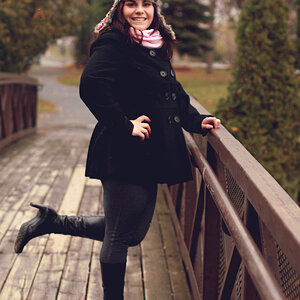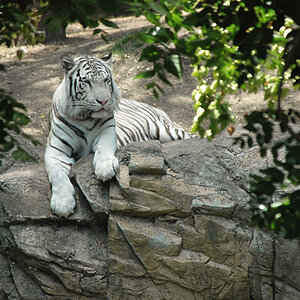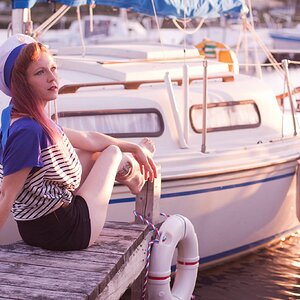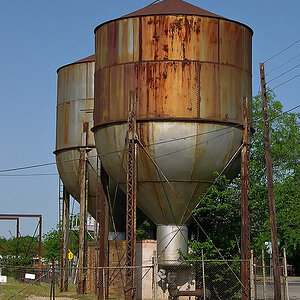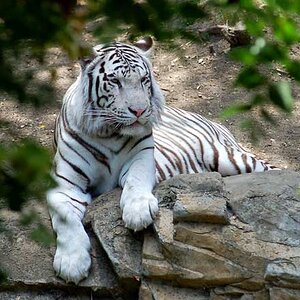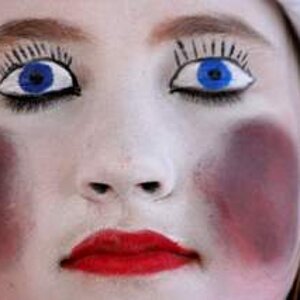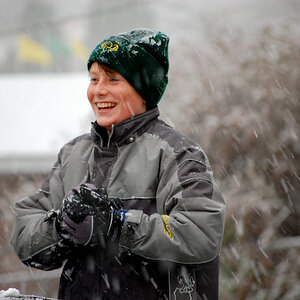mstone
TPF Noob!
- Joined
- Jun 29, 2014
- Messages
- 3
- Reaction score
- 0
- Can others edit my Photos
- Photos NOT OK to edit
I'm going to be doing my cousin's wedding and the reception is in an old barn, so there's no way I can bounce light. Given the way the barn is constructed, I also can't put lights on stands like I want to; it's just not practical. I also don't have an assistant to walk around with a pole or hold a reflector. So, it's just me and my on-camera SB800. In a barn. In the evening. With very little light. However, there are a few beams that span the middle of the barn, above where most of the people should be during the reception. They're maybe 18-20 feet up, and spaced out every 12 feet or so I'd guess. I'm wondering if (assuming I can get up there and figure out a way to do it) mounting a speedlight to two of the beams and pointing them down with their diffusers on will help my lighting situation. With just the on-camera, I risk getting shadows that I don't want, or having a dark background. My thought with having 2 SBs up high is that it would be somewhat similar to bouncing off a ceiling....the obvious difference being that bouncing creates a large area of light, whereas using a SB up high is still only a small light source. I'd probably only fire the flash that's behind the people at the time of my shot, turning off the one that's closest/in front of them since I'll have my on-camera flash.
If it matters, I'd be using a D700 with a mounted SB800, and then two SB900s in the rafters with Pocket Wizard Plus III's. Lens will primarily be 24-70mm 2.8, so fast glass should help too.
This isn't super critical to my success here, most pictures come out fine with just the one light on the camera (I have a Rogue flash bender that I attach to the SB to bounce light...I highly recommend them...), but if I can find a way to incorporate more lights, it would obviously be that much better. Would this idea help, do you think? It'll be a pain to figure out the right power output for them since I won't be able to touch them all night, so I'd probably play it safe and keep it on the low end rather than the high end; I'd rather them do very little than to make people's heads glow.
Also, the ceremony is going to take place outside in late-afternoon sidelight (well, sidelight when they're facing out towards the crowd. Sun will be west-northwest and the ceremony is pointing south-southwest). Brutal. Aside from staying front and center to utilize my flash (again, only my on-camera SB) to minimize harsh shadows, is there anything else I can do to tame the sun? I'm making sure the bride has her back to the sun when she's turned facing the groom so the front of her dress doesn't look like a flood lamp, but that's really all I've got for ideas. I'm generally opposed to using filters on top-notch glass like the 24-70mm but are there any filters that could help? To make things even more interesting, there's another dark barn immediately behind the bride and groom, and it will likely be shaded (so a dark brown barn made all the darker by being in the shade, while the bride and groom are 6 feet in front of it in the bright grass in full sun). Any way to combat THAT? Can I use the shutter speed to control the background light / barn, and rely on the flash and aperture settings to control the exposure of the bride and groom, knowing that the barn will likely still be underexposed by at least a stop or two (which is probably a good thing anyway)?
This wedding is a portfolio builder for me as it's my first one, to see how I like it. I typically do sports...weddings are a little different. My cousin knows that and isn't really expecting much at all, but I have high standards for myself and want to be able to put a successful wedding under my belt. I did their engagement photos and they came out great, but it was also extremely overcast so I found it much easier to work. People tell me I'm shooting in the two worst conditions (late-afternoon sidelight followed by a dim barn) but that's no excuse for mediocrity; I know it's more than doable. I just need a little help getting there. Any input would be GREATLY appreciated. If anyone would like to see what the barn looks like I can post some photos or a link to previous weddings that were done there.
My cousin knows that and isn't really expecting much at all, but I have high standards for myself and want to be able to put a successful wedding under my belt. I did their engagement photos and they came out great, but it was also extremely overcast so I found it much easier to work. People tell me I'm shooting in the two worst conditions (late-afternoon sidelight followed by a dim barn) but that's no excuse for mediocrity; I know it's more than doable. I just need a little help getting there. Any input would be GREATLY appreciated. If anyone would like to see what the barn looks like I can post some photos or a link to previous weddings that were done there.
Thank you!!!
If it matters, I'd be using a D700 with a mounted SB800, and then two SB900s in the rafters with Pocket Wizard Plus III's. Lens will primarily be 24-70mm 2.8, so fast glass should help too.
This isn't super critical to my success here, most pictures come out fine with just the one light on the camera (I have a Rogue flash bender that I attach to the SB to bounce light...I highly recommend them...), but if I can find a way to incorporate more lights, it would obviously be that much better. Would this idea help, do you think? It'll be a pain to figure out the right power output for them since I won't be able to touch them all night, so I'd probably play it safe and keep it on the low end rather than the high end; I'd rather them do very little than to make people's heads glow.
Also, the ceremony is going to take place outside in late-afternoon sidelight (well, sidelight when they're facing out towards the crowd. Sun will be west-northwest and the ceremony is pointing south-southwest). Brutal. Aside from staying front and center to utilize my flash (again, only my on-camera SB) to minimize harsh shadows, is there anything else I can do to tame the sun? I'm making sure the bride has her back to the sun when she's turned facing the groom so the front of her dress doesn't look like a flood lamp, but that's really all I've got for ideas. I'm generally opposed to using filters on top-notch glass like the 24-70mm but are there any filters that could help? To make things even more interesting, there's another dark barn immediately behind the bride and groom, and it will likely be shaded (so a dark brown barn made all the darker by being in the shade, while the bride and groom are 6 feet in front of it in the bright grass in full sun). Any way to combat THAT? Can I use the shutter speed to control the background light / barn, and rely on the flash and aperture settings to control the exposure of the bride and groom, knowing that the barn will likely still be underexposed by at least a stop or two (which is probably a good thing anyway)?
This wedding is a portfolio builder for me as it's my first one, to see how I like it. I typically do sports...weddings are a little different.
 My cousin knows that and isn't really expecting much at all, but I have high standards for myself and want to be able to put a successful wedding under my belt. I did their engagement photos and they came out great, but it was also extremely overcast so I found it much easier to work. People tell me I'm shooting in the two worst conditions (late-afternoon sidelight followed by a dim barn) but that's no excuse for mediocrity; I know it's more than doable. I just need a little help getting there. Any input would be GREATLY appreciated. If anyone would like to see what the barn looks like I can post some photos or a link to previous weddings that were done there.
My cousin knows that and isn't really expecting much at all, but I have high standards for myself and want to be able to put a successful wedding under my belt. I did their engagement photos and they came out great, but it was also extremely overcast so I found it much easier to work. People tell me I'm shooting in the two worst conditions (late-afternoon sidelight followed by a dim barn) but that's no excuse for mediocrity; I know it's more than doable. I just need a little help getting there. Any input would be GREATLY appreciated. If anyone would like to see what the barn looks like I can post some photos or a link to previous weddings that were done there.Thank you!!!



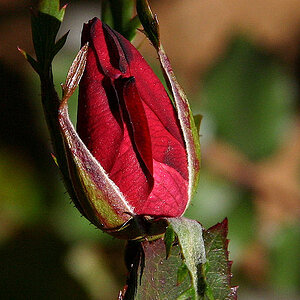
![[No title]](/data/xfmg/thumbnail/36/36675-f6965e1e6c1fa2be4ff0460e9657fe99.jpg?1619737676)
![[No title]](/data/xfmg/thumbnail/41/41797-ed370d68dae70f5b0a7252ec2d525912.jpg?1619739896)


